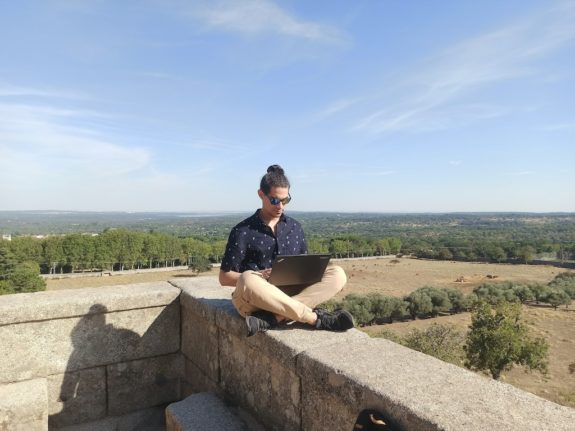If you’re planning to stay in Italy for the long term, sooner or later you’ll need to visit the Ufficio Anagrafe (registry office) of the Italian town or municipality you’re living in to register: a process known as the iscrizione anagrafica.
Registering with your local ‘anagrafe’ is a legal requirement, and it’s an essential first step to accessing many public and private services in Italy
The iscrizione anagrafica is needed to issue you with an Italian ID card (carta d’identità) and residency certificate (certificato di residenza). Registration is also important if you later intend to apply for Italian citizenship by marriage or naturalisation, or ancestry via the ‘fast track’ route.
So how do you register at the anagrafe and what documents will you need?
In some cities, you’ll need to make an appointment to register – sometimes weeks in advance. Some municipalities also allow you to apply online or via email. Check the website of your local comune for more information about the procedure you’ll need to follow. See information for the anagrafe in Rome or Milan (available only in Italian).
READ ALSO: What’s the difference between Italian residency and citizenship?
Each town or comune has its own application forms, and the documentation needed to apply will also vary depending on your personal situation. If you visit the anagrafe in person, staff should be able to tell you exactly what you’ll need and provide you with hard copies of the forms.
Note that information is not always available in English, so if you don’t speak much Italian you may need to take a friend with you to translate.
To give you an idea of what to expect, here’s a quick overview of the requirements, which differ mainly depending on whether you’re a citizen of an EU or non-EU country.
EU nationals
Although EU citizens have the right to travel freely around European member states, those staying in Italy longer than three months must apply for a certificato di residenza (residency certificate), which means registering at the anagrafe.
In general, you’ll need to submit the following along with your application form:
-
- Copy of a valid identification document from your home country
- copy of your personal Italian tax code (codice fiscale), which you can get from the tax office (agenzia dell’entrate);
- a valid health insurance policy, if you are not eligible to register with the Italian national health service (SSN);
- declaration of your address in Italy (dichiarazione di residenza);
- declaration of your marital status and any dependent family members;
- Evidence of employment, study or training in Italy, or proof that you have sufficient economic means to support yourself and any dependents.

The application requirements for non-EU nationals can vary much more depending on your personal circumstances. You’ll need to consult your local anagrafe or comune for detailed information about the requirements in your situation.
In most cases, the application process is similar to that for EU nationals, but you’ll also need to show your residency permit plus other documentation depending on the reasons for which the permit was given.
This means you’ll usually need to submit the following along with your application form:
-
- Passport or equivalent identification document from your home country;
- original copy of your residency permit (permesso di soggiorno or equivalent), or the receipt if you’ve applied but haven’t received it yet;
- proof of employment if your residency permit was issued for work reasons OR
- certification of enrollment in education or a professional training course, if the permit is for study or training purposes;
- proof that you have sufficient economic means to support yourself and any dependents;
- copy of your personal Italian tax code (codice fiscale), which you can get from the tax office (agenzia dell’entrate);
- a valid health insurance policy, if you are not eligible to register with the Italian national health service (SSN);
- declaration of your address in Italy (dichiarazione di residenza);
- declaration of your marital status and any dependent family members.
Note for non-EU nationals moving to Italy to claim citizenship via ancestry: Non-EU nationals can initially register with the anagrafe without a permesso di soggiorno (this is to give them the opportunity to start the citizenship by ancestry application process, and in turn claim a permesso for attesa di cittadinanza (permit for stay while waiting for citizenship)).
READ ALSO: Can second-home owners get an Italian residency permit?
All applicants will also need to pay the application fee, which is currently set at €27.50 plus tax.
And if you rent, your landlord or housing association in Italy will need to provide a signed document authorising you to use the address on your registration. Be aware that there are reports of some unscrupulous landlords attempting to charge foreign nationals a fee for this document – which is not legal.
What happens next?
If you submit the application in person, the iscrizione anagrafica is effective immediately, meaning you can apply for your certificato di residenza and carta di identità.
However, the anagrafe has 45 days to check your documents and to verify that you actually live at the address you’ve given. They’ll do this by sending an official to visit you at home: some comuni will give you an appointment for this visit, while in others they’ll turn up without notice, but either way if you’re not at home when they arrive this can cause delays.
The anagrafe has the right to reject your application if any of your documents are found to be invalid or any of your information incorrect. You can appeal against rejections, though you’ll likely need the help of a legal professional.
Once approved, registration with the anagrafe does not expire or need to be renewed. It can be cancelled if you move to another part of Italy or abroad.
Please note that The Local cannot advise on individual cases. For further information on the process and requirements in your area, visit your local anagrafe office or check the official website of your town’s comune.





 Please whitelist us to continue reading.
Please whitelist us to continue reading.
Member comments